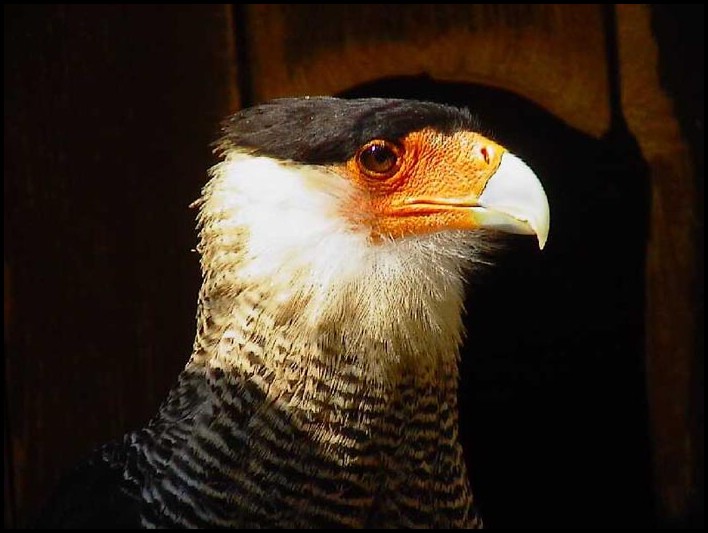|
| 질의: birds of america | 결과: 404번째/1888 | |
Crested Caracara (Polyborus plancus) - Wiki
| 제목: | Crested Caracara (Polyborus plancus) - Wiki
| |

| 해상도: 708x533
파일크기: 72122 Bytes
등록시간: 2007:12:05 14:39:29
|
Crested Caracara
From Wikipedia, the free encyclopedia
Order: Falconiformes
Family: Falconidae
Subfamily: Polyborinae
Synonyms: Caracara cheriway, Polyborus tharus
[Photo] Crested Caracara; Schopfkarakara (Polyborus plancus). Source: http://www.tiermotive.de/ Date 16.09.2005. Author Dustin H??nes
The Crested Caracara, Polyborus plancus (or Caracara cheriway according to the AOU), is a bird of prey in the family Falconidae. It is the only living member of the genus Polyborus, following the extinction of the Guadalupe Caracara. Unlike the Falco falcons in the same family, the caracaras are not fast-flying aerial hunters, but are rather sluggish and often scavengers.
The Crested Caracara is a resident breeder in most of South and Central America, just reaching the southernmost parts of the USA, including Florida, where it is resident but listed as threatened. South of the US border, it is a commonly seen large raptor.
This is a bird of open country, which nests in a tree or on the ground, laying 2 to 4 eggs. It is 58 cm (23 in) long with a 125 cm (4 ft) wingspan. Individuals have also been observed both in the air and on the ground in urban areas near nature reserves.
The Crested Caracara is broad-winged and long-tailed. It also has long legs and frequently walks and runs on the ground. It is very cross-shaped in flight. The adult has a black body, wings, crest and crown. The neck, rump, and conspicuous wing patches are white, and the tail is white with black barring and a broad terminal band. The breast is white, finely barred with black. The bill is thick, grey and hooked, and the cere is red. This species has bare skin around the eye that can change color in seconds. Sexes are similar, but immature birds have a brown back, buff neck and throat, and pale breast streaked with brown. The voice of this species is a low rattle.
The Crested Caracara is omnivorous, and will eat reptiles, amphibians and other small animals as well as carrion.
The Crested Caracara is not the national bird of Mexico, as was previously thought. It is actually the Golden Eagle.
http://en.wikipedia.org/wiki/Crested_Caracara
| The text in this page is based on the copyrighted Wikipedia article shown in above URL. It is used under the GNU Free Documentation License. You may redistribute it, verbatim or modified, providing that you comply with the terms of the GFDL. |
|
^o^
동물그림창고 똑똑전화 누리집
^o^
|
|